How AI is Changing the Face of Modern Web Design for Retailers
How AI is Changing the Face of Modern Web Design for Retailers

If you wish to build a retail website that actually converts, you’ve got to move beyond the aesthetics and imagery. According to data, it takes only 50 seconds for a user to form an opinion about your website. Naturally, creating a lasting first impression should be every eCommerce website’s priority.
AI is Changing the Face of Modern Web Design for Retailers
To make a lasting first impression, you’ll want to tap into the true potential of your website, you need to provide an end-to-end simplified and personalized user experience. This is where AI is making its indelible mark. In this in-depth guide, we will deep dive to understand the tips, tricks, and benefits of integrating AI into your website. Let’s jump right in.
How Technology is Transforming the Retail Industry: A Data-Backed Perspective
First things first, it is critical to understand the increasing role of AI in today’s digitally-driven eCommerce landscape. Amidst the fears of physical shopping and social distancing, retailers have adapted to the new normal by integrating a host of intuitive technological features to better cater to their user base’s demands. These include:
-
The Powerful Visual Search Technology:
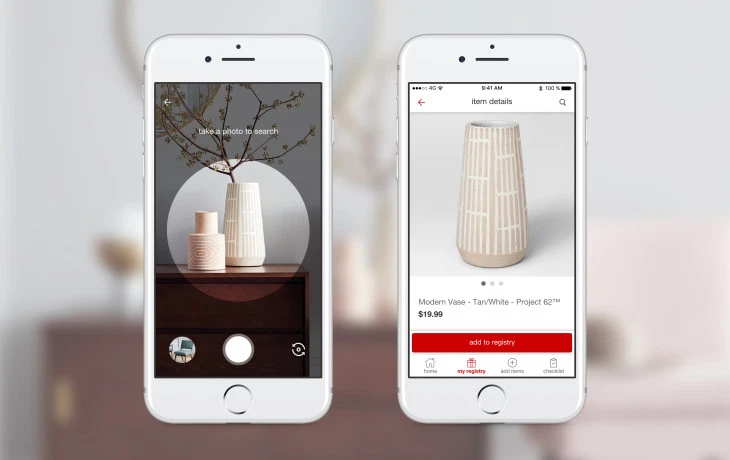
Wouldn’t life be simpler if you could simply shop using images from your web or smartphone? eBay’s powerful AI-led visual search tool allows you to do just that. Its “Image Search” feature allows a consumer to take a photo of an item they wish to purchase or take an existing image from their phone’s Camera Roll.
When they log onto the eBay website, the platform will show listings of visually similar items when compared to the uploaded image. In simpler words, the AI technology reduces the consumer’s effort (and time) to search for products using the right keywords and makes the buying process becomes seamless, quick, and efficient:
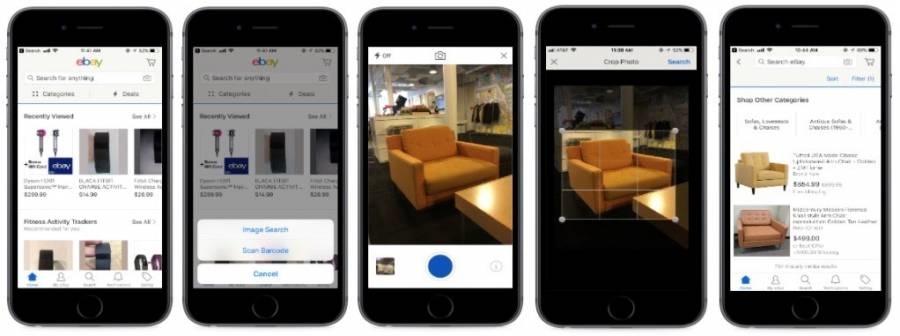
Pro tip: This tool can be integrated on the landing page to provide contextual product recommendations to the consumer and address complex user queries visually, within seconds. ASOS also uses visual search technology to make the consumer’s life easier:
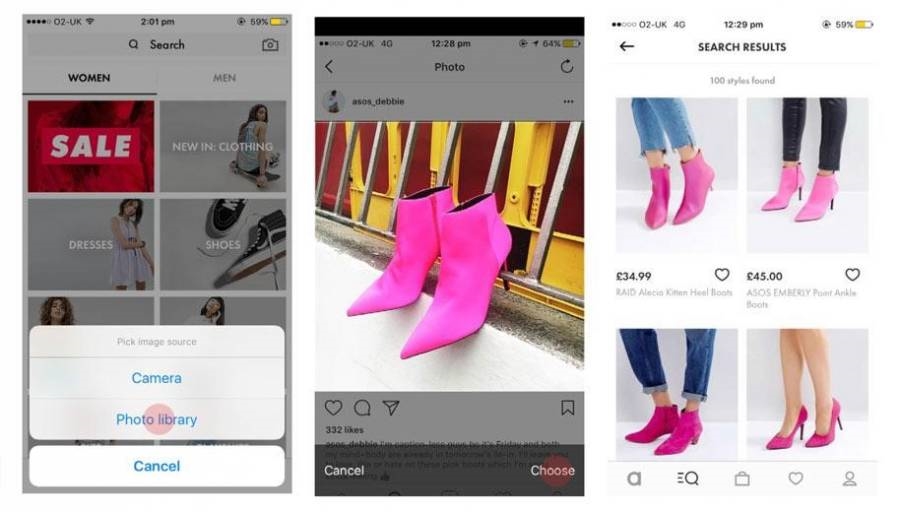
-
Chatbot technology:
Chatbots, a.k.a., virtual assistants make use of complex natural language processing (NLP) systems to mimic human interactions and drive more meaningful conversations with users.
These bots can literally take over a live agent’s workload and assist customers by helping them make purchases, by providing personalized product recommendations, by assisting them in making payments or completing an order purchase, and so on.
Take a look at Nordstrom’s chatbot, which effectively asks users a series of questions about what they want and then generates custom-made ideas based on the answers:
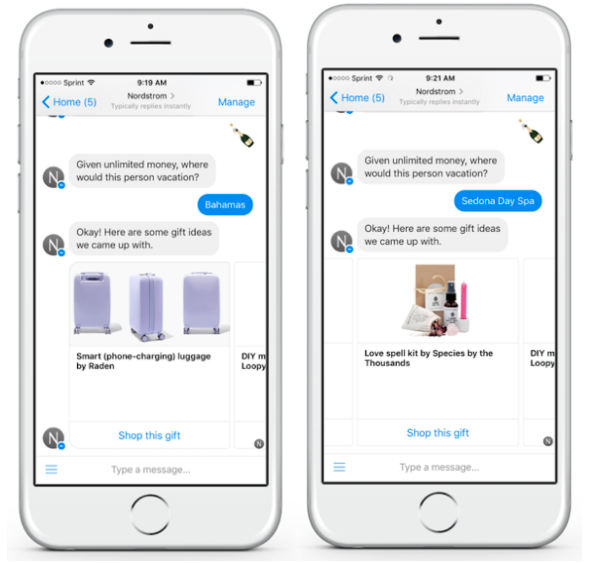
If data is to be believed, chatbots will drive $ 112Bn in retail sales by 2023. So integrating this intuitive and intelligent technology into your website design is a must if you wish to retain the competitive edge while adding a ‘personal touch’ to your website.
- Artificial design intelligence (ADI): While still in its nascent stages, the ADI technology can automatically build websites based on the latest UI/UX trends and double up as a virtual web designer for all intents and purposes. This technology leverages key data points such as website analytics, user preferences, product catalog, etc., to come up with a customized theme, content, and color palette. It also uses AI to produce functional and attractive web designs without human intervention. Here’s an example of an ADI design by the web development platform, Wix:
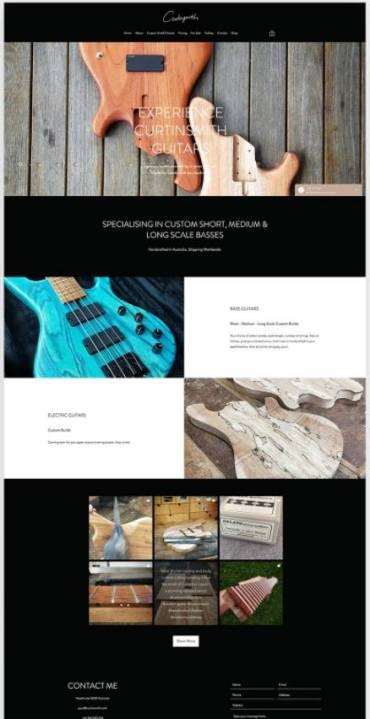
All in all, this data-powered process makes web designing more accessible, quick, and affordable. However, the ability to customize the website might be restricted, making your overall design less unique than human-made custom designs. Additionally, it might lack a seasoned graphic designer’s personal and creative touch, so tread with caution.
Pro tip: If you have an e-commerce website that routinely receives thousands of Request for Quotes (RFQs), you can use the ADI technology to power and optimize your website, and drive data-driven interactions with customers. You can also use this technology if you have a product launch or a new event coming up, and need a microsite to be set up within minutes.
The learning: Considering how Covid-19 has accelerated digital adoption, particularly in the eCommerce sector, it makes sense for businesses to invest in the right mix of AI-driven tools to boost conversions through increased responsiveness, drive user happiness, and deliver a hyper-personalized, engaged, and rich experience to users at scale.
Moving on, let’s understand why AI needs to be integrated into your eCommerce website.
Top-5 Reasons Why AI is the Super-Fuel Retailers Need to Boost Growth
The smart consumers of today demand a customized, features-driven, and optimized shopping experience. This is where a slew of AI tools can lend a helping hand by:
- Enhancing your website’s appearance, usability, user experience, as well as speed
- Optimizing the search abilities–be it visual or voice search
- Enhancing the quality of user interactions and accelerating the query resolution time
- Providing a hyper-personalized user experience based on real-time consumer insights such as spending habits, user behavior, demographics, etc.
- Targeting consumers through strategic digital campaigns and providing in-depth reports on the campaign’s performance
- Acting as a web design diagnostic tool by way of running A/B tests, maintaining high design quality, etc.
These are just some of the important use-cases of how AI can drive user engagement and improve the UI/UX of your overall website design.
The learning: With more and more customers becoming avid online shoppers, owing to the global pandemic, the time is ripe for eCommerce brands to integrate AI into their web designing strategy and provide unique experience to customers while boosting their digital footprint.
How AI can be Implemented into Retail Websites: Useful Strategies & Hacks
In this section, we will highlight key strategies to embrace while implementing AI into your retail website:
#1. Use AI to enable shoppers to discover complimentary products–from size and color to shape and fabric, there are many factors to consider while delivering contextual search capabilities. For example, Pinterest allows users to choose an item in any photograph online. It then showcases identical items using image recognition software:
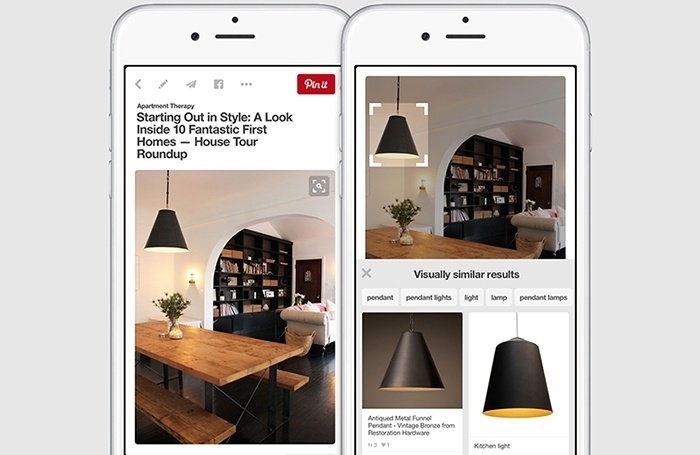
You can also integrate AI-powered quizzes into your website and provide tailored recommendations based on the user’s inputs as ThirdLove demonstrates below:


#2. Use AI tools to drive informed decision-making on key areas of focus such as design, content, structure, layout, graphics, etc. By empowering a model that analyzes existing websites and encourages real-time suggestions, AI can enable brands to deliver an improved user experience and target the right users at the right time with the right messaging.
#3. Use Artificial Design Intelligence to create smarter websites within minutes, without the hassle of coding. Here’s an example of AI that’s integrated into web designing to provide a clean, functional, and seamless browsing experience by Wix. The platform asks the users a series of questions to understand their website requirements and suggests layouts as well as designs accordingly:
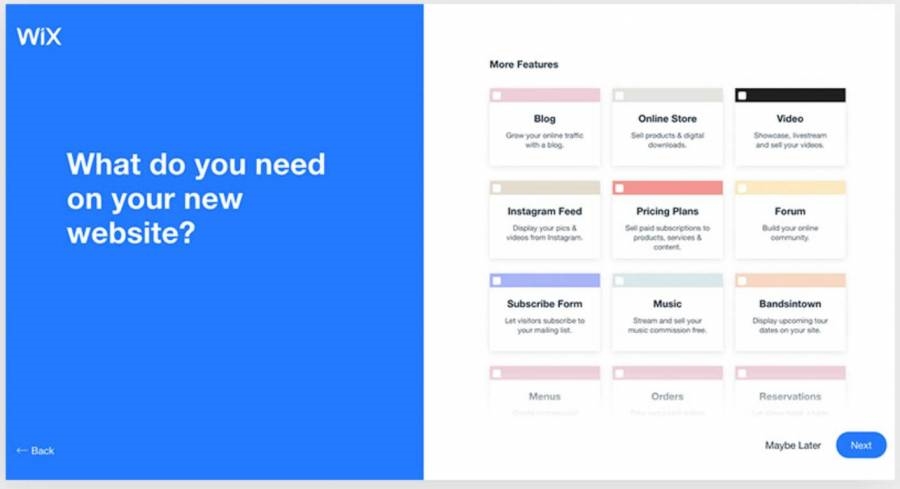
#4. Engage in effective, reliable, and quick quality checks. AI tools can be used to address tedious and repetitive tasks of quality assurance checks. As you can imagine, this leaves your developers with saved time to focus on other areas such as enhancing the existing features or taking care of bugs. Additionally, AI tools can bolster your website’s security, and uphold the privacy and sensitivity of your consumer’s data–one of the biggest concerns among users today.
#5. Personalize the online experience using real-time user data. AI can analyze content as well as consumer preferences to personalize the website experience from start to finish. For instance, Sephora’s Virtual Artist makes use of augmented reality and allows consumers to virtually ‘try on’ products, thereby enabling an informed purchase experience:
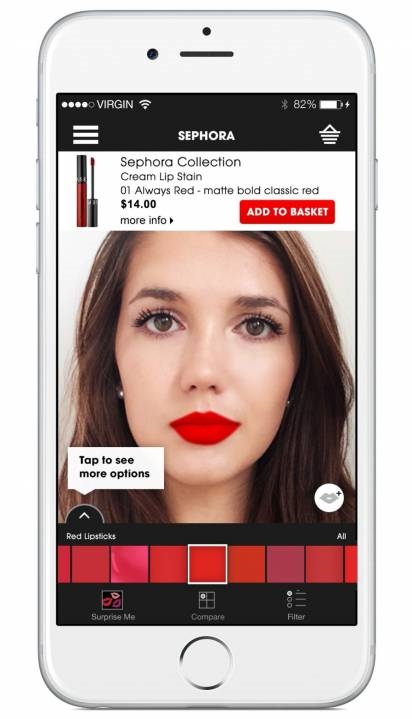
This functionality can be integrated into your website’s high-performing product pages to enhance the customer experience, connect better with users, and drive brand loyalty. Today, customer loyalty is no longer restricted to loyalty points and rewards, it is all about driving an innovative and convenience-led experience for the customer.
The learning: AI has doubled up as a crucial web designing tool, assisting eCommerce businesses to leverage technology and improve the user experience via real-time and accurate user data, via contextual product recommendation, via convenience-led voice and search capabilities, and so on. It also does much of the heavy-lifting with respect to key stages and elements of the web designing process such as coding, privacy and security, user experience, quality analysis, among others.
Top Factors to Pay Attention to When Setting Up AI-Powered Chatbots
When you are setting up your own AI-powered chatbot, here are a few important best practices to keep in mind:
- Think about the end goal that the chatbot should achieve–it could be better user engagement, gathering real-time user feedback, analyzing user preferences, providing personalized product recommendations, and so on.
- Strategize and conceptualize your chatbot’s tone of voice as well as personality. Customers do not want to speak to robot-sounding dull bots that answer in one-word or singular sentences. It helps to lend your bot a warm, friendly tone and a quirky/funny personality if your brand positioning allows it. Plus, your chatbot should be well-trained to drive meaningful conversations with the user, drive contextual recommendations, and self-learn with every interaction:

- Keep a backup ready by enabling chat routing to the next available live agent, if the chatbot is unable to effectively address the user’s query. Making the customer wait and then providing incorrect solutions is a complete no-no.
- Use a variety of formats to deliver the message to the user instead of using plain text. You can introduce new products via images or videos as shown below:

You can use GIFs, emojis, etc., and drive engagement by literally speaking in the customer’s language. You can include quizzes to gather user feedback or collect user information on product preferences. The idea is to play with a variety of formats and provide diversity to the onlooker.
- Ensure that your bot is capable of providing multilingual support if you wish to cater to a global audience.
- Integrate your bot with the right messaging channels that your customers frequent such as WhatsApp, Facebook, etc.:

Closing Thoughts
There’s no doubt that AI is disrupting nearly every industry, area, or domain–with eCommerce web designing being no exception. eCommerce brands are beginning to understand the vital role AI plays in augmenting the human effort of designing by taking over routine and repetitive tasks and driving a seamless, personalized and consistent browsing experience. That said, you should brainstorm to understand the key gaps within your website and then strategize on how AI technology can help address the specific pain point. Implementing any and every new AI-driven technology, without strategic thinking, will only make the browsing experience chaotic or worse, senseless.
Article Image Credit: from the author; thank you!
Top Image Credit: kaboompics; pexels; thank you!
The post How AI is Changing the Face of Modern Web Design for Retailers appeared first on ReadWrite.
(35)

